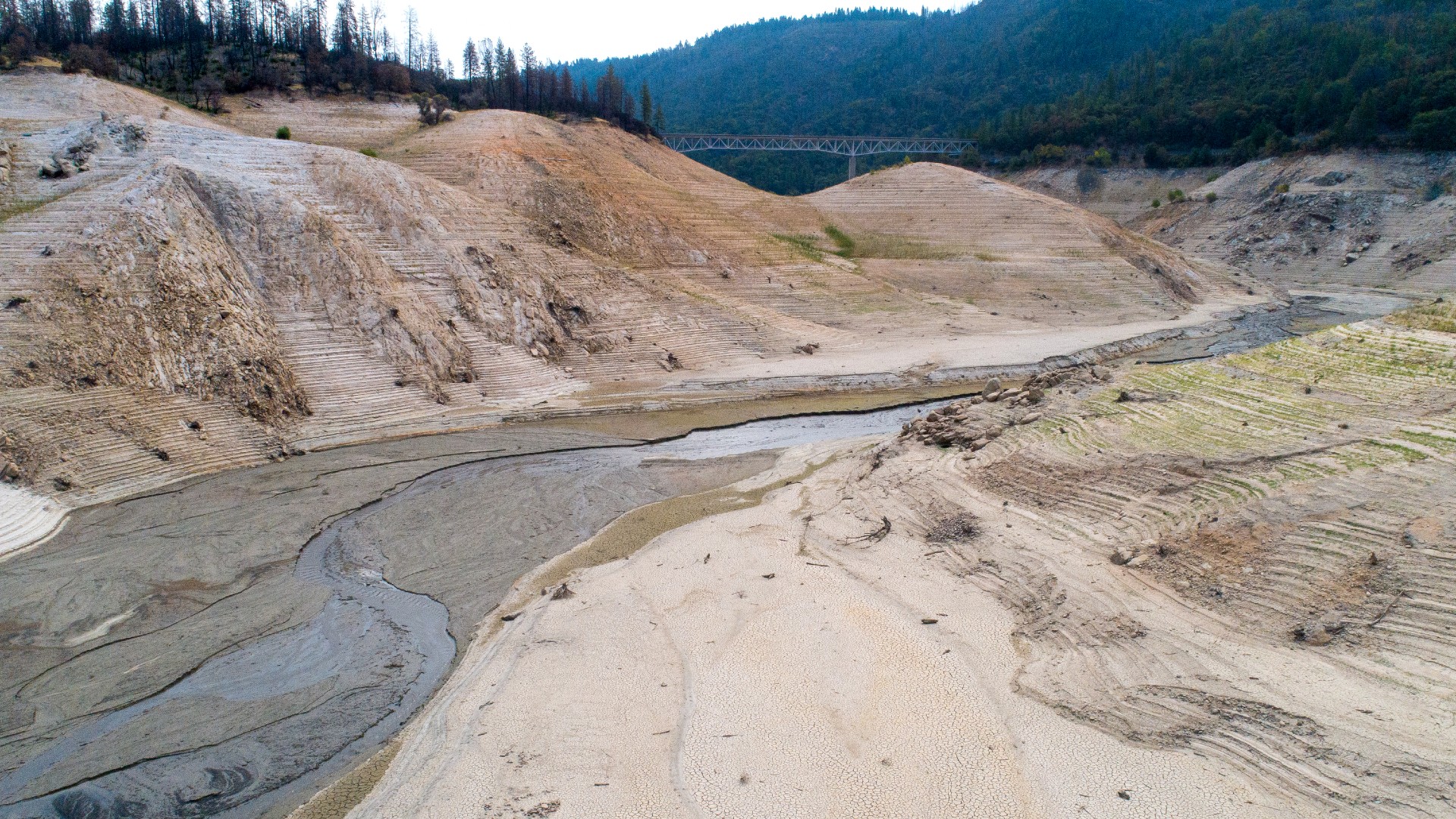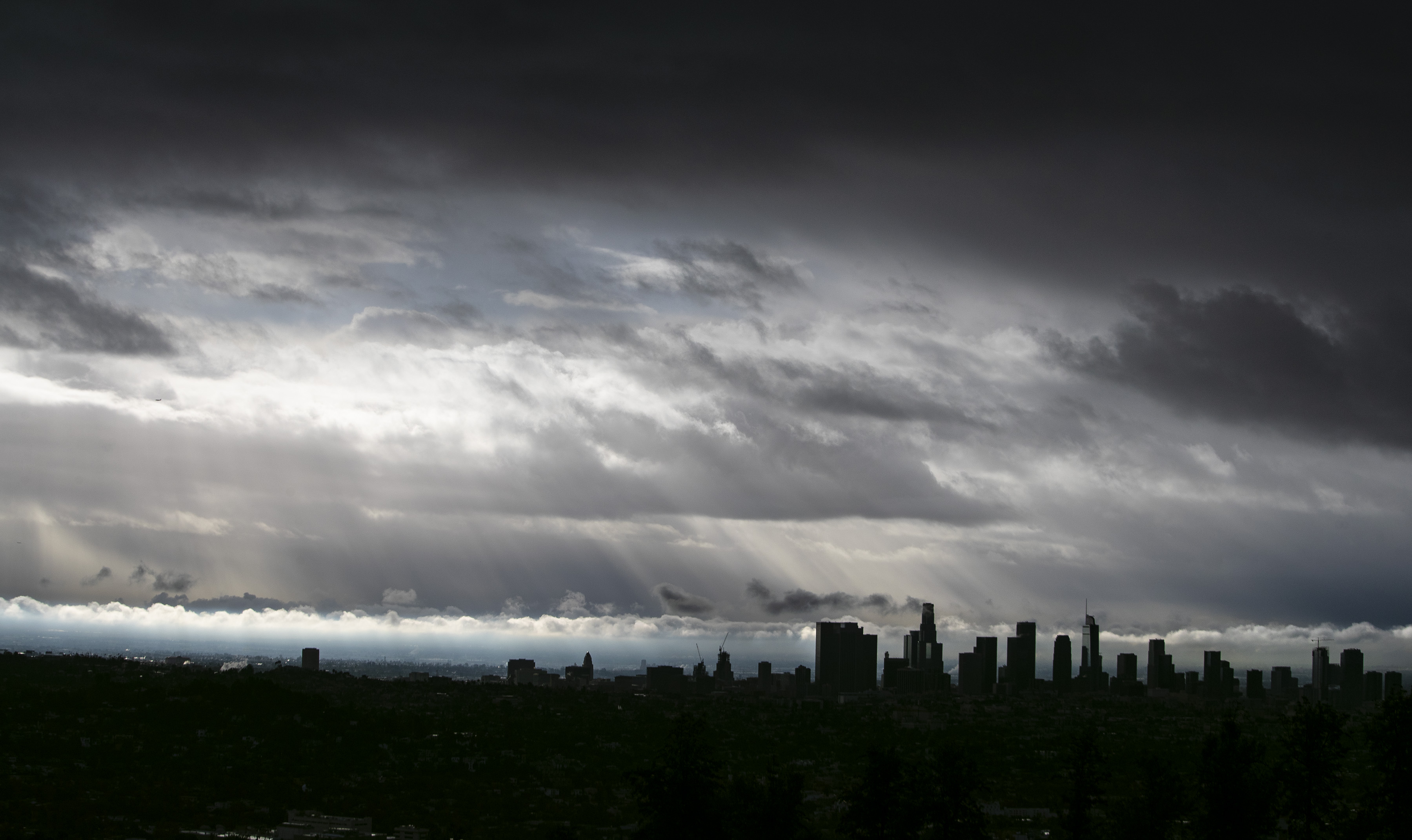A powerful storm that swept through California set rainfall records in the north, but weakened as it moved south into the Los Angeles area.
The system, powered by an atmospheric river, still produced a few daily records in SoCal and the most significant rainfall in months, enough to cause mudslides that closed roads in the San Bernardino Mountains. Most areas in Southern California received less than an inch of rain by late afternoon, although Pasadena recorded 1.11 inches.
Here are more rainfall totals for SoCal. Click here for a full list from the National Weather Service.
- Long Beach Airport: 0.13 inches, breaking the old record of 0.08 inches set in 2010.
- Camarillo Airport: 0.7 inches, breaking old record of 0.39 inches set in 1940
- Los Angeles International Airport: 0.39 inches, breaking old record of 0.19 inches set in 1951.
- Santa Barbara Airport: 0.96 inches, breaking the old record of 0.02 inches set in 2000.
- La Cañada Flintridge: 1.31 inches
- Coto De Caza: 0.71 inches
- Whittier: 0.55 inches
- Northridge: 0.53 inches
- Downtown Los Angeles: 0.49 inches
- Avalon Harbor: 0.15 inches
- Santa Monica Airport: 0.47 inches
- UCLA: 0.51 inches
- Chatsworth: 0.46 inches
- Saugus: 0.34 inches
- Van Nuys: 0.47 inches
- Lancaster: 0.28 inches
Get Southern California news, weather forecasts and entertainment stories to your inbox. Sign up for NBC LA newsletters.
Records also were set at Paso Robles Airport (1.54 inches, breaking old record of 0.18 inches set in 1950) and Santa Maria Airport (1.28 inches, breaking old record of 0.3 inches set in 1951).
Photos: October Storm Lashes California
To the north, the National Weather Service called preliminary rainfall totals “staggering,” including 11 inches at the base of Marin County’s Mount Tamalpais and 4 inches in downtown San Francisco, the fourth-wettest day ever for the city.
“It’s been a memorable past 24 hours for the Bay Area as the long talked-about atmospheric river rolled through the region,” the local weather office said Monday. “We literally have gone from fire/drought conditions to flooding in one storm cycle.”
Northeast of San Francisco, 5.44 inches fell on downtown Sacramento, shattering the one-day record for rainfall that had stood since 1880.
Along the central coast, nearly 5.4 inches of rain was recorded at California Polytechnic State University in San Luis Obispo County.
Interstate 80, the major highway through the Sierra Nevada Mountains to Reno, Nevada, was shut down by heavy snow early Monday. In California’s Colusa and Yolo counties, state highways 16 and 20 were shut for several miles because of mudslides, the state Department of Transportation said.
In the Yosemite Valley, the dormant Yosemite Falls roared back to life. More than six inches of rain fell across the valley during a 36-hour period.
Lake Oroville, a major Northern California reservoir, saw its water levels rise 20 feet over the past week, according to the state’s Department of Water Resource. Most of the increase came between Saturday and Monday, during the height of the storm.
Justin Mankin, a geography professor at Dartmouth College and co-lead of the Drought Task Force at the National Oceanic and Atmospheric Administration, said the cycle of going from years-long drought to record-breaking downpours is something expected to continue because of climate change.
“While this rain is welcome, it comes with these hazards, and it won’t necessarily end the drought,” Mankin said. “California still needs more precipitation, and it really needs it in high elevations and spread out over a longer time so it’s not hazardous.”
The long-term forecast for California shows drier-than-normal conditions, Mankin said.
“To end different aspects of the drought, you are going to need a situation where parts of California get precipitation over the next three months that’s about 200% of normal,” he said, adding that “despite this really, really insane rainfall, the winter is probably going to be drier than average.”



